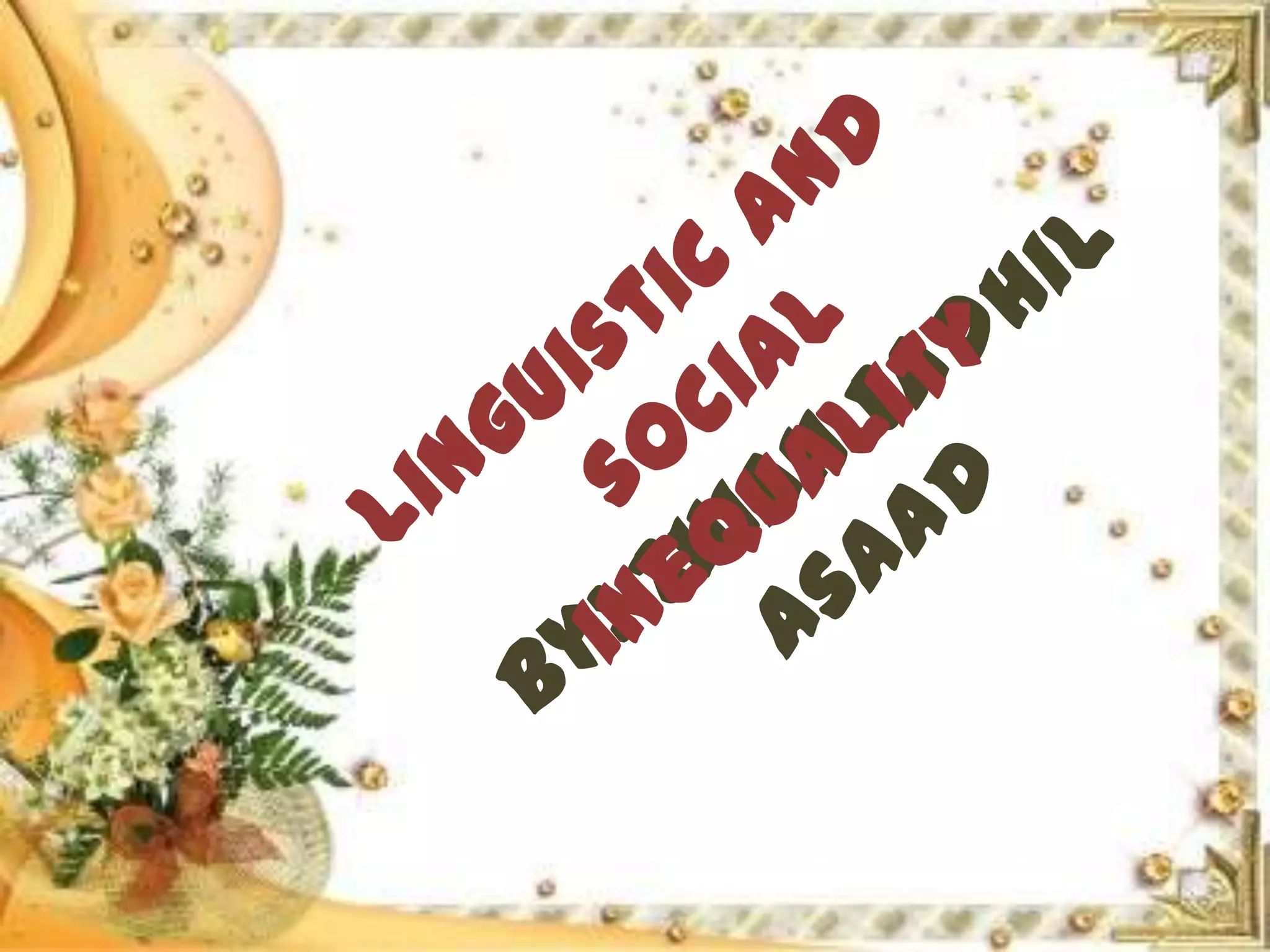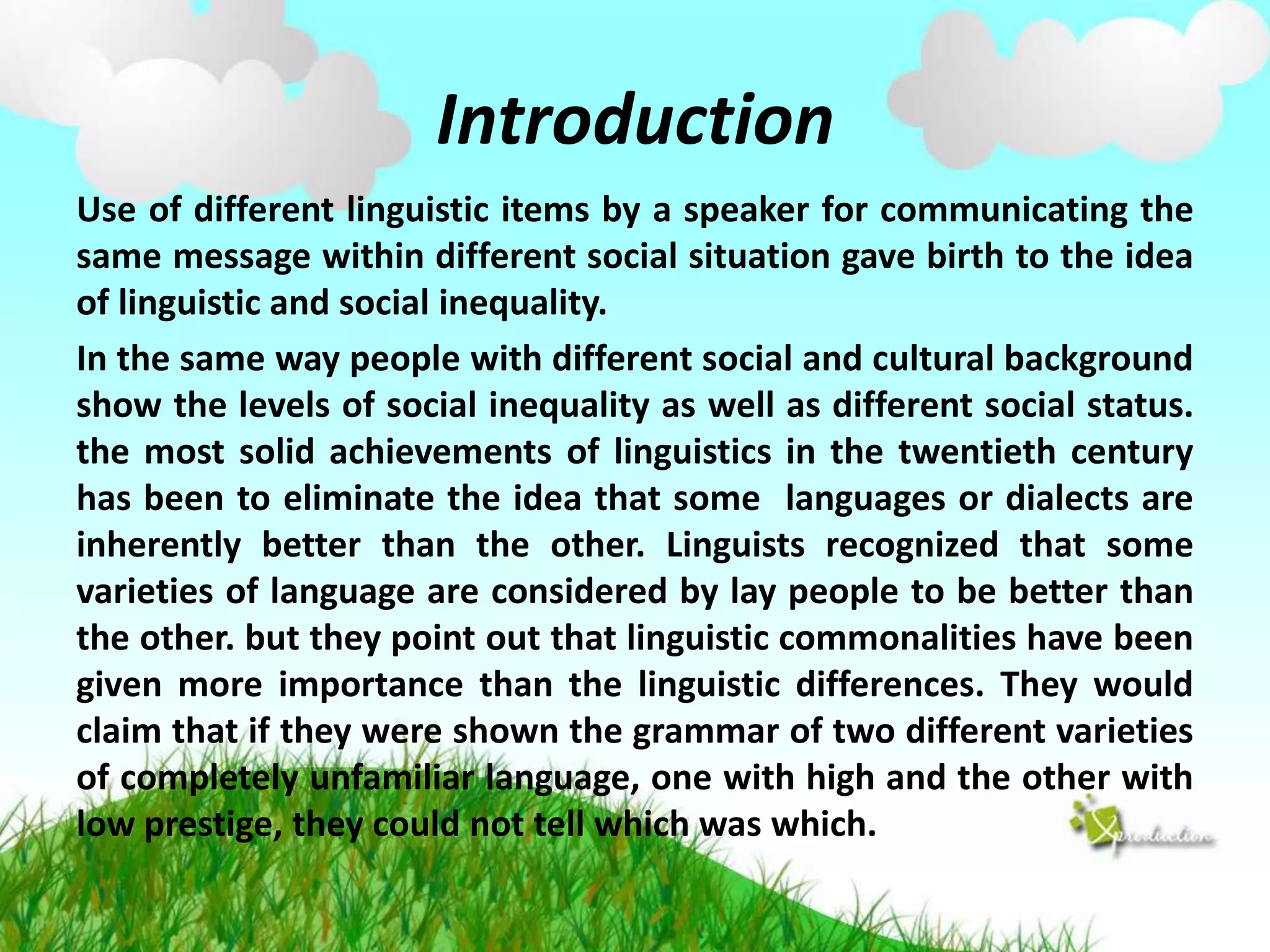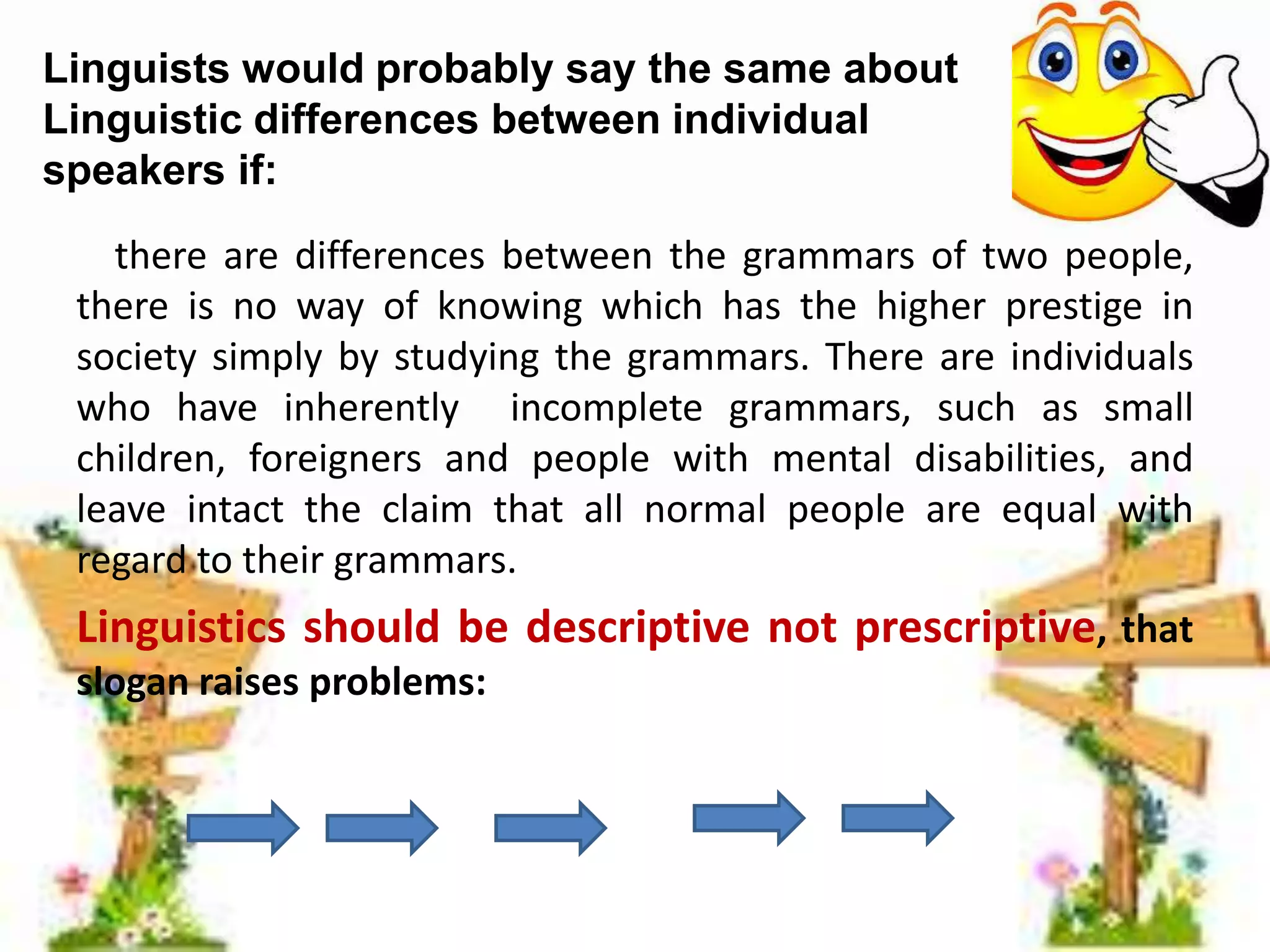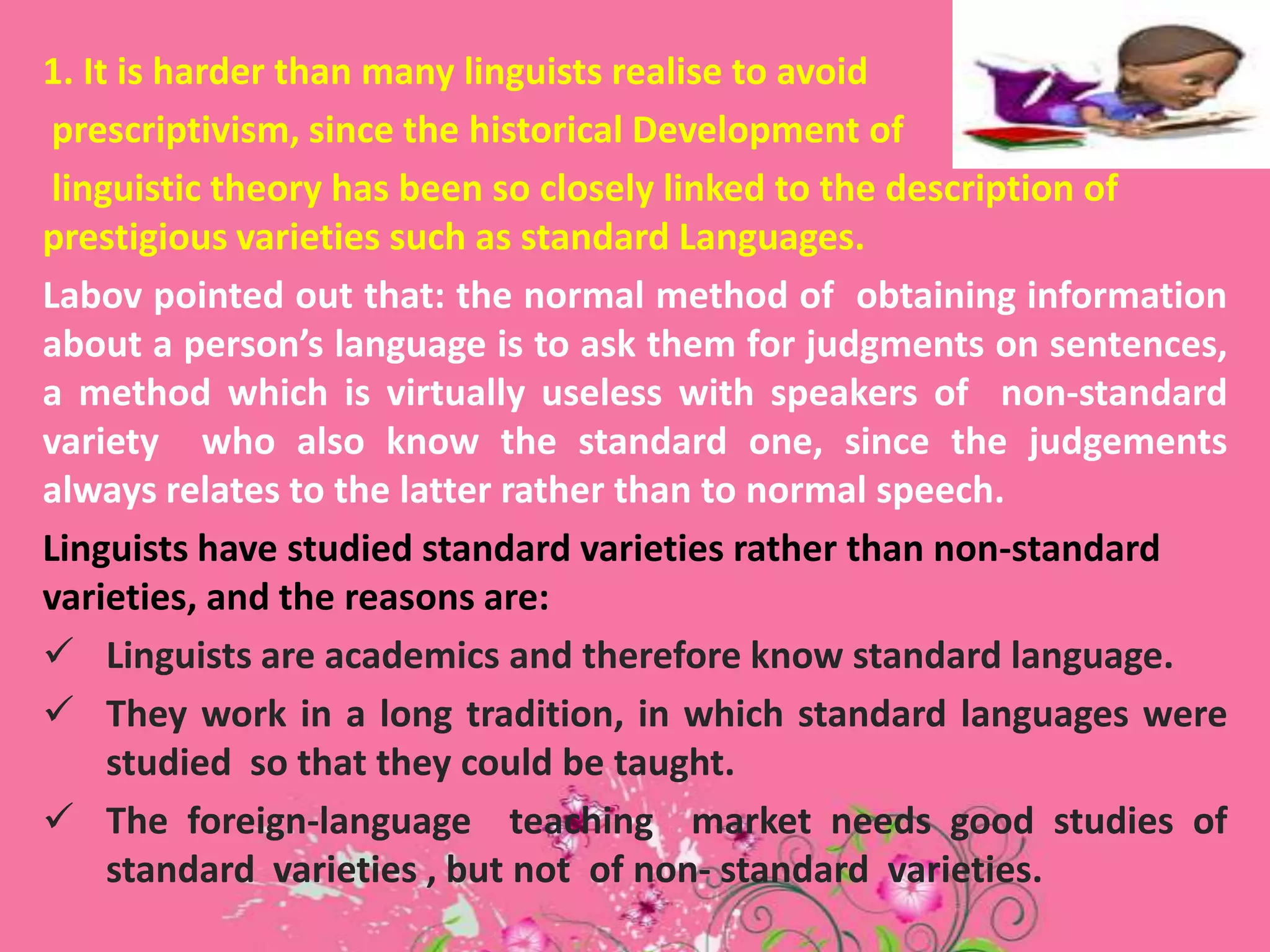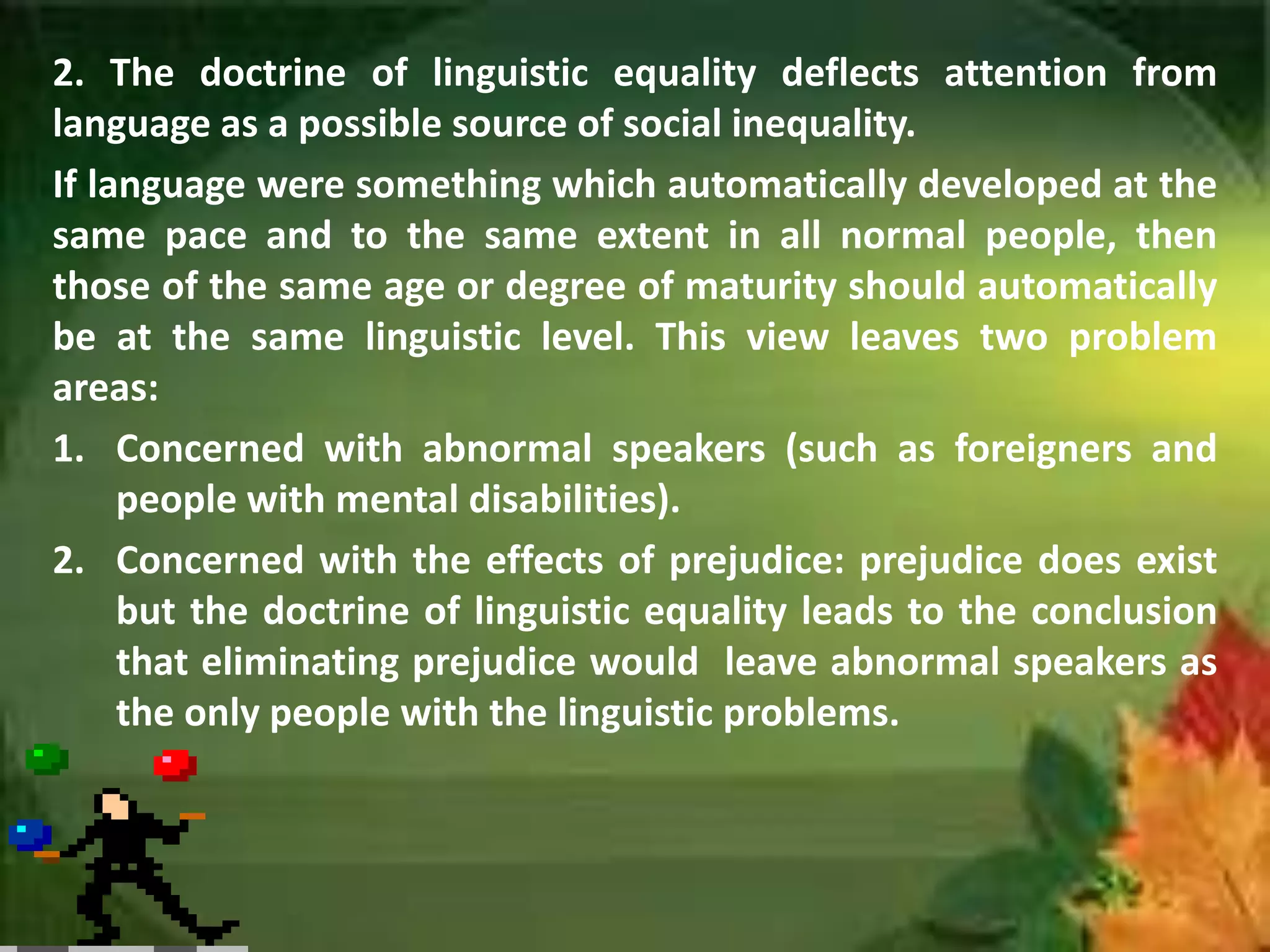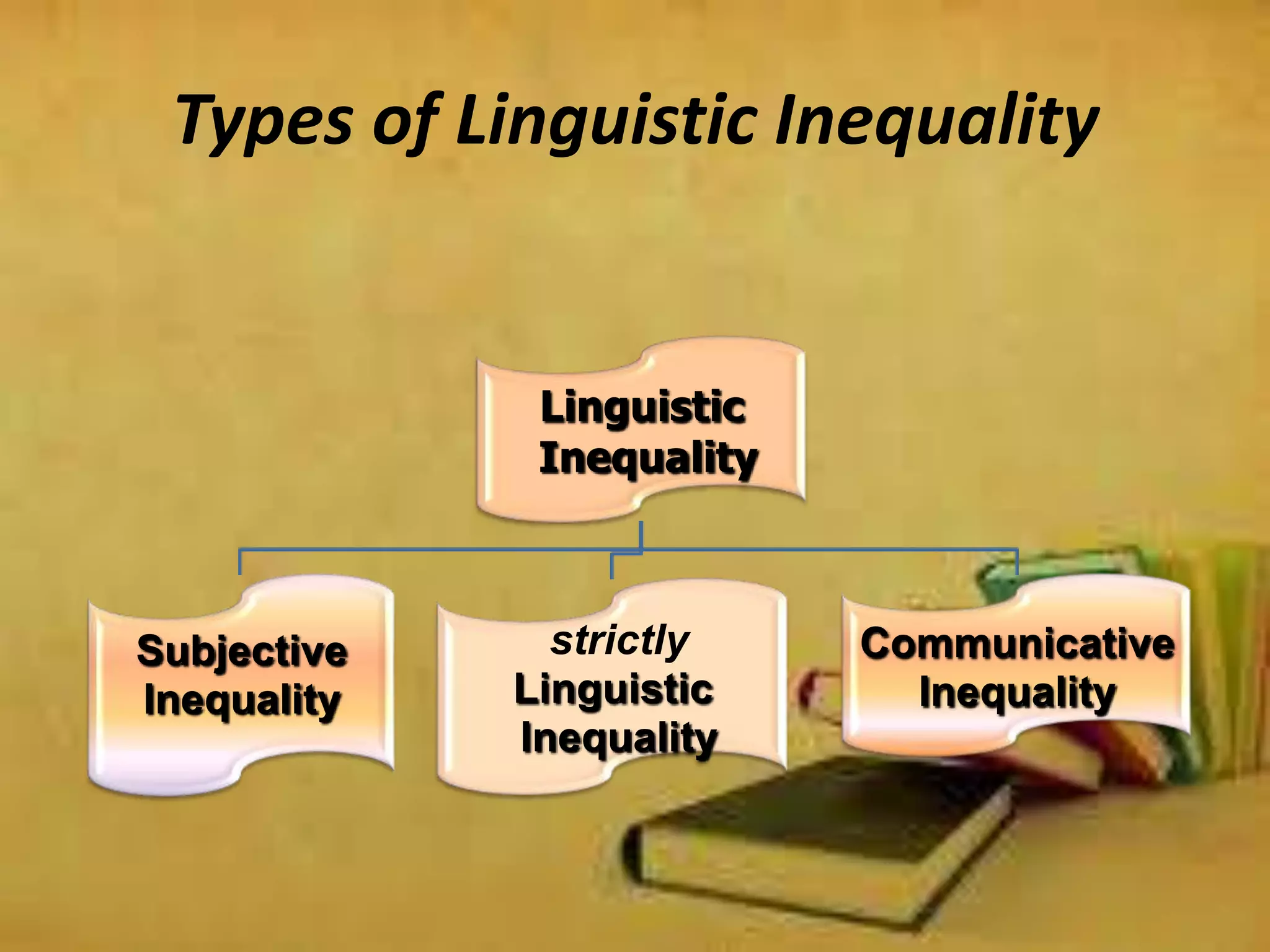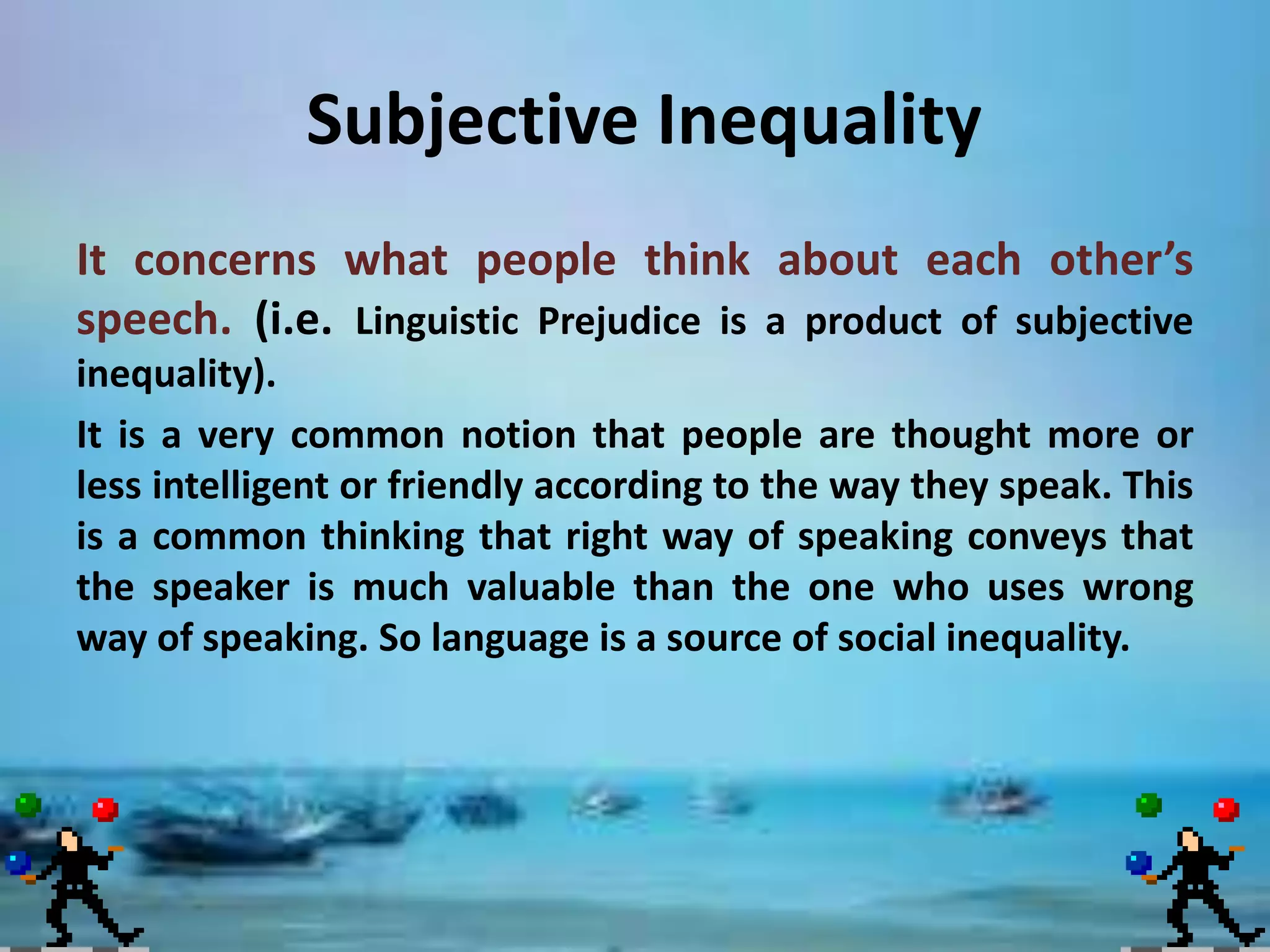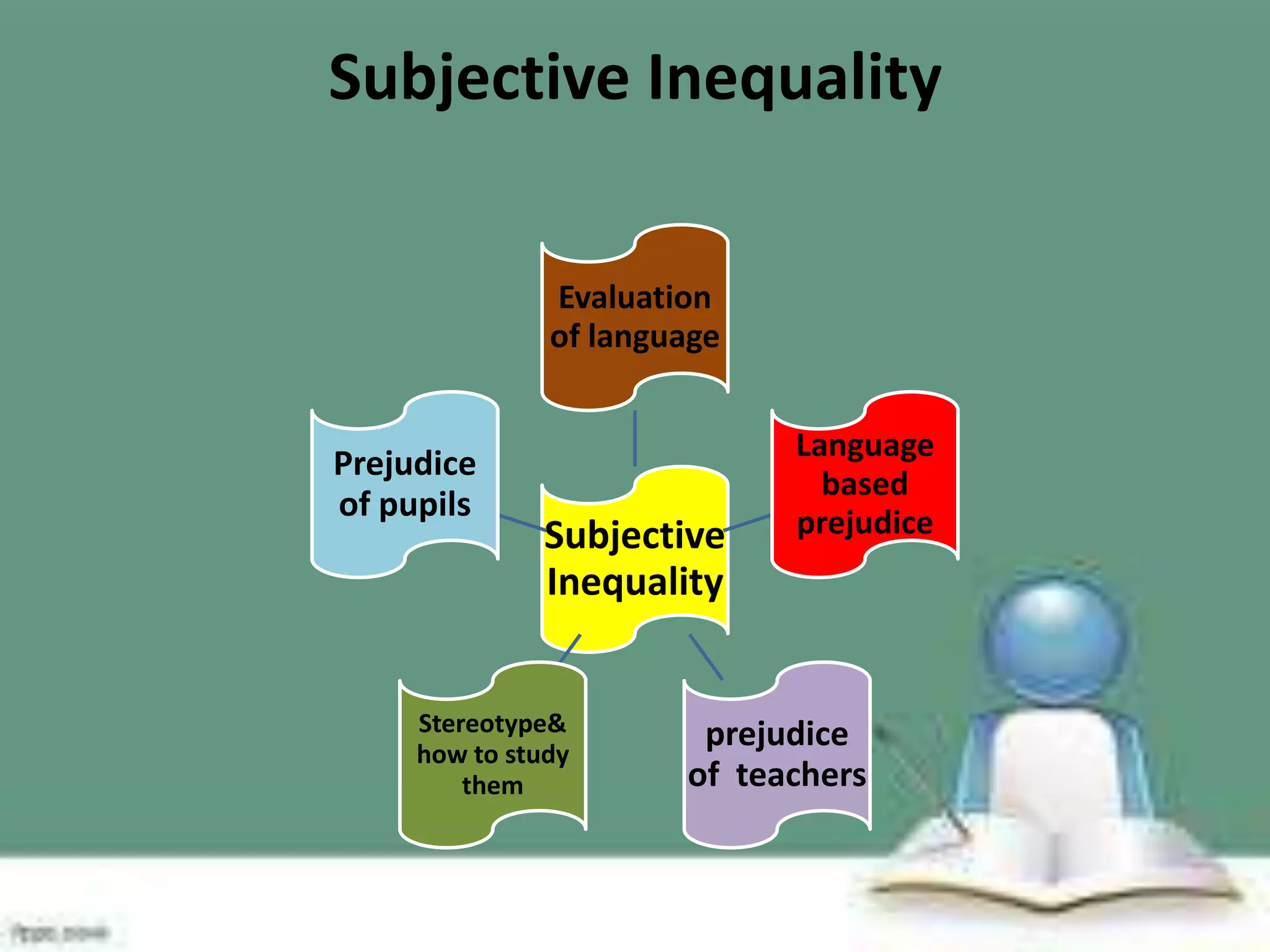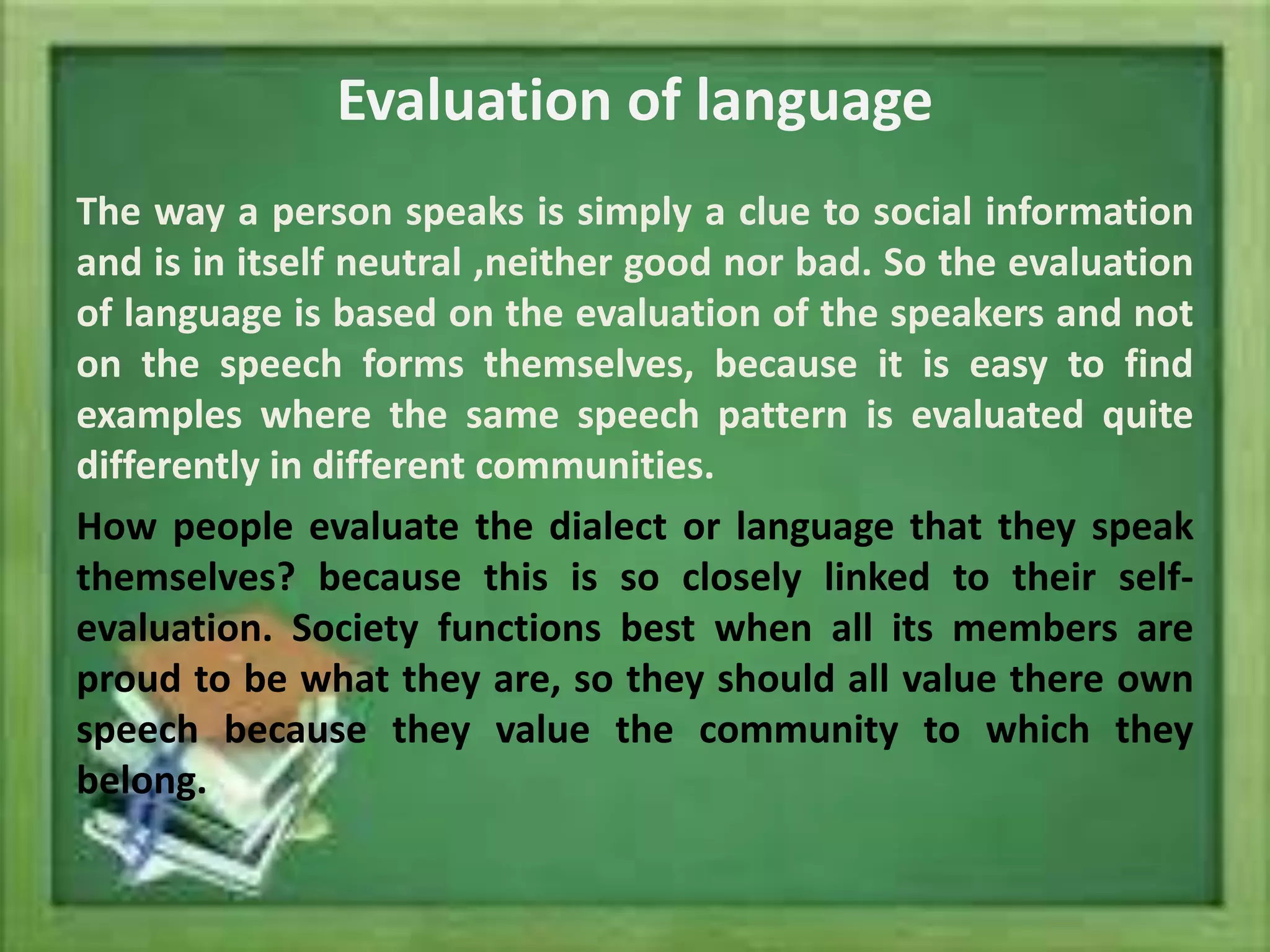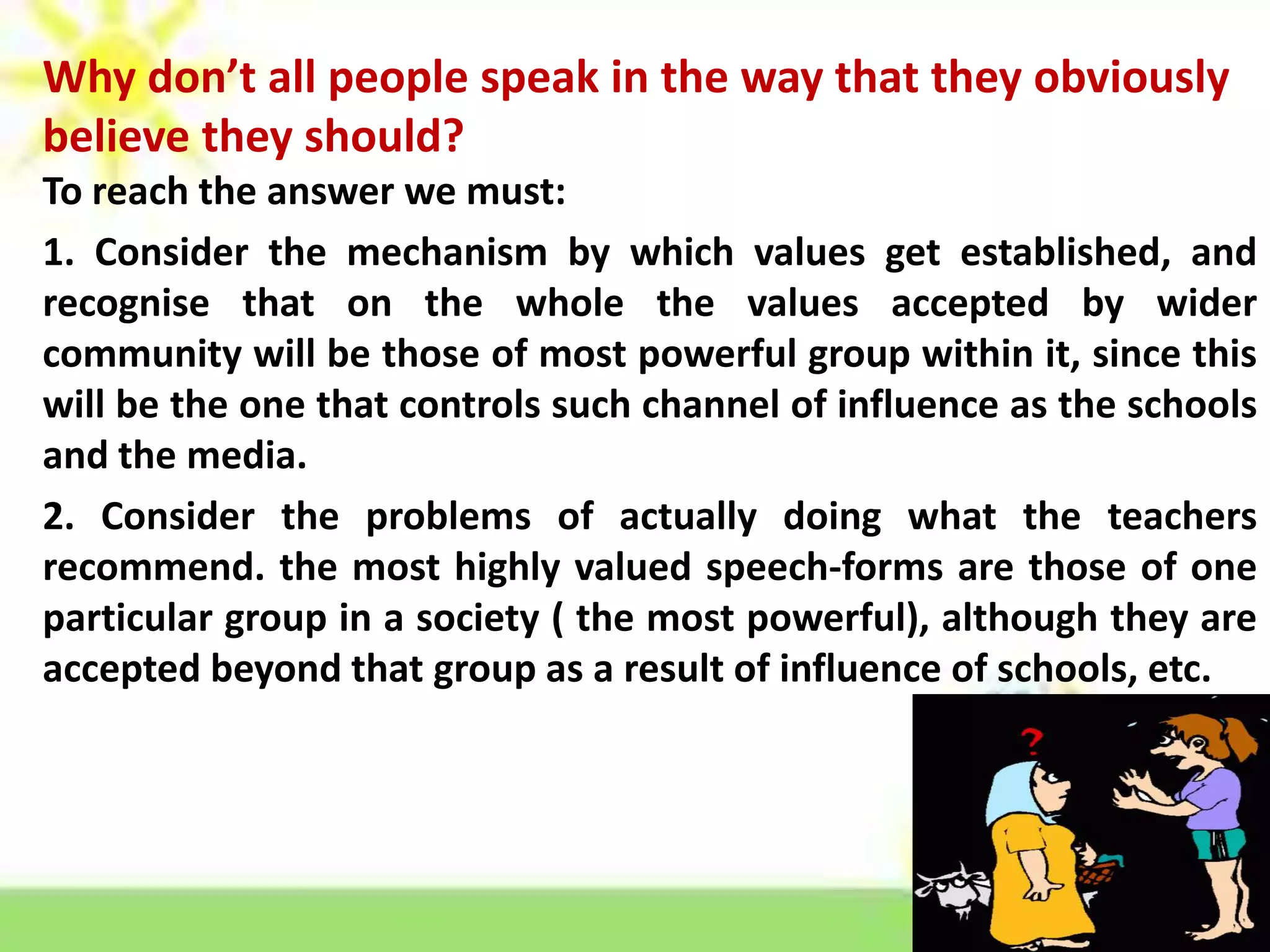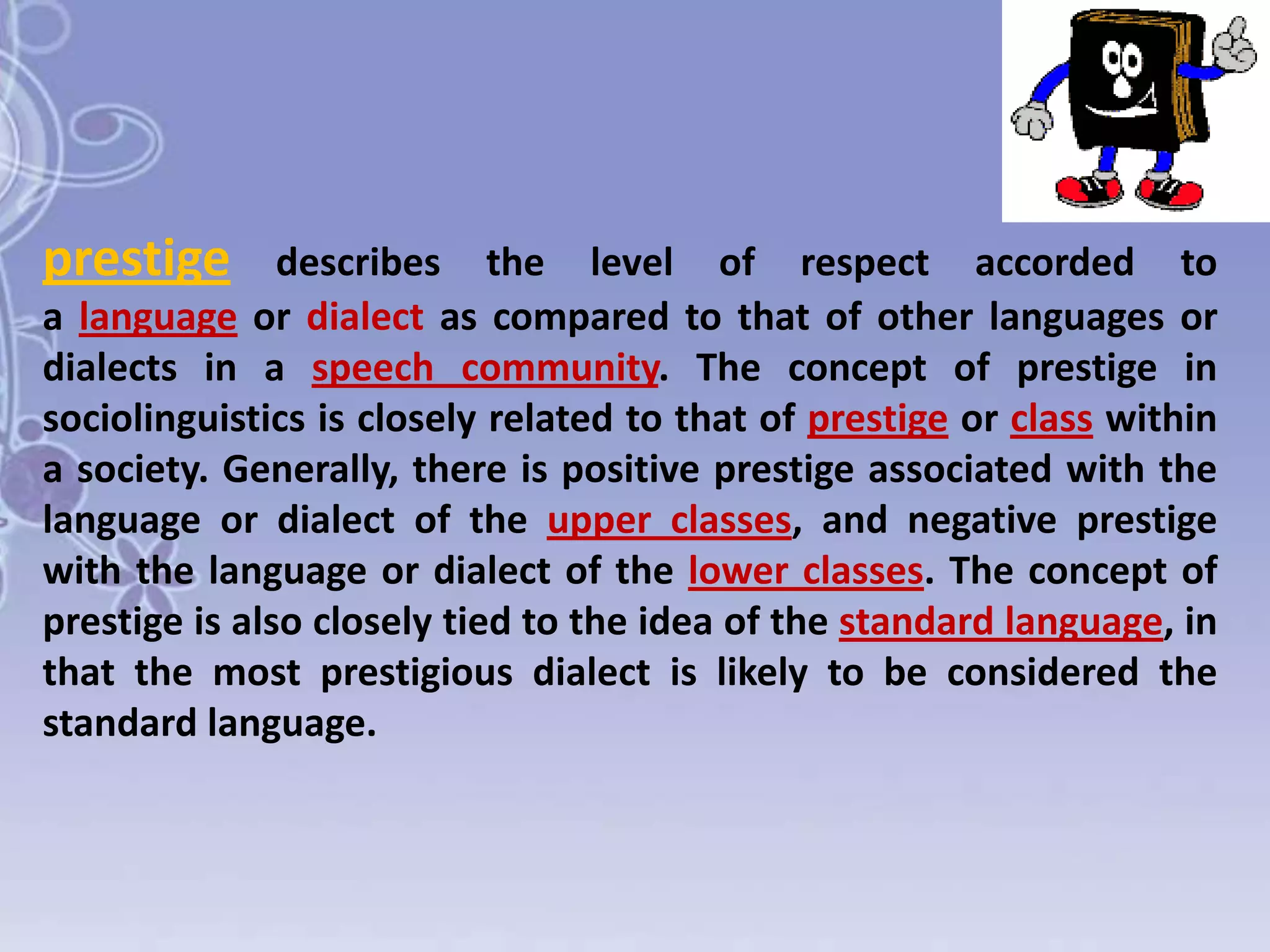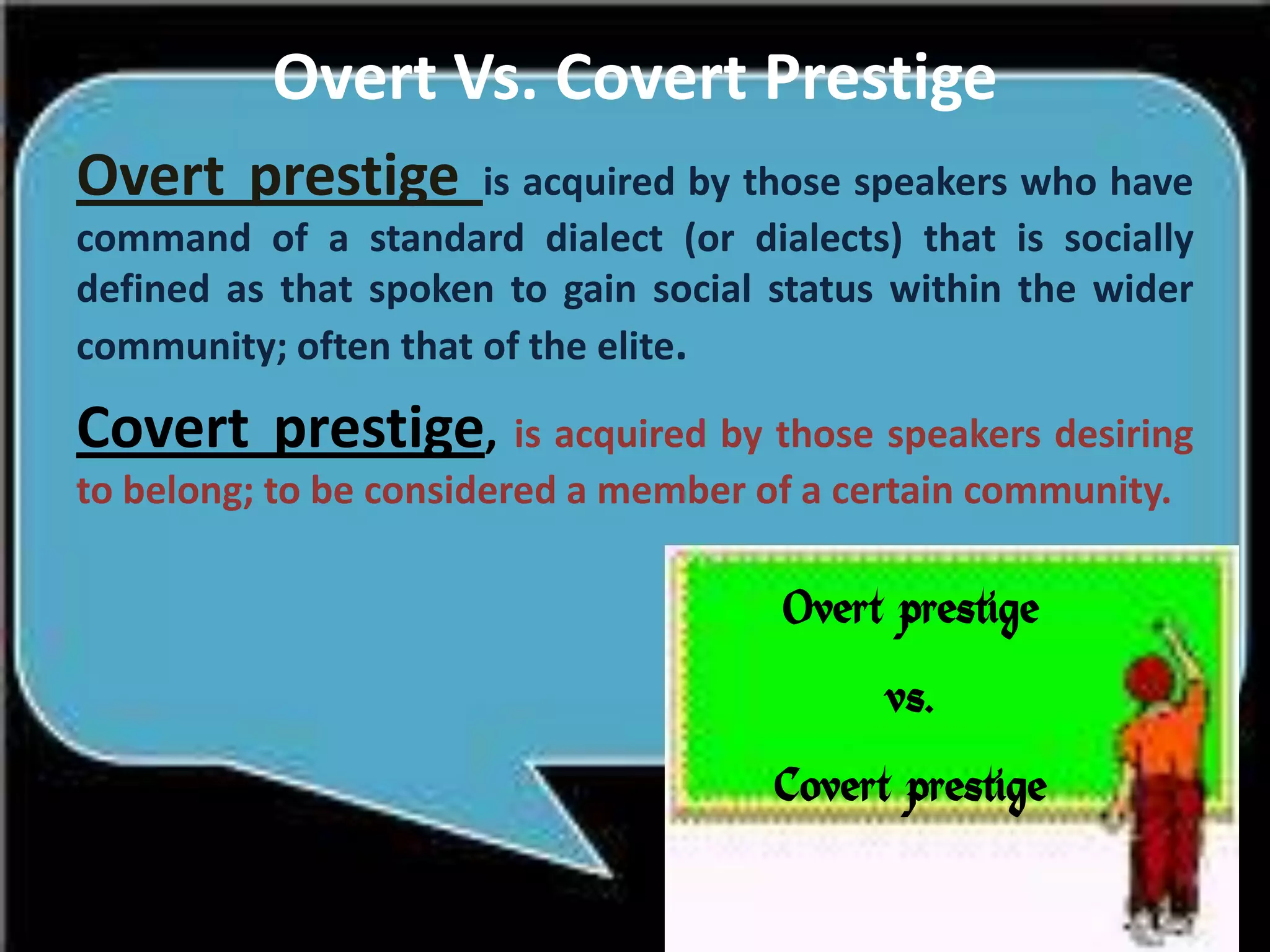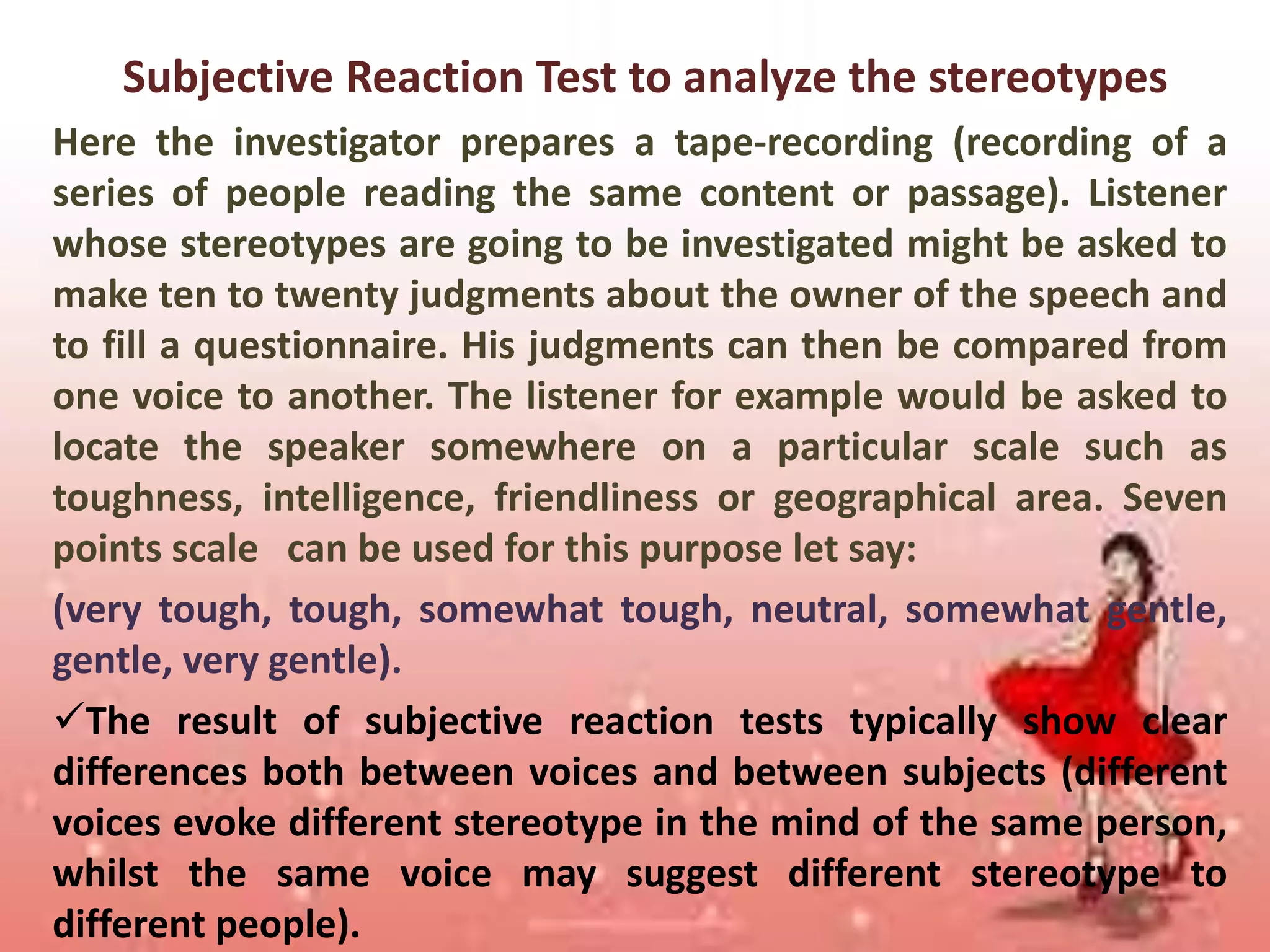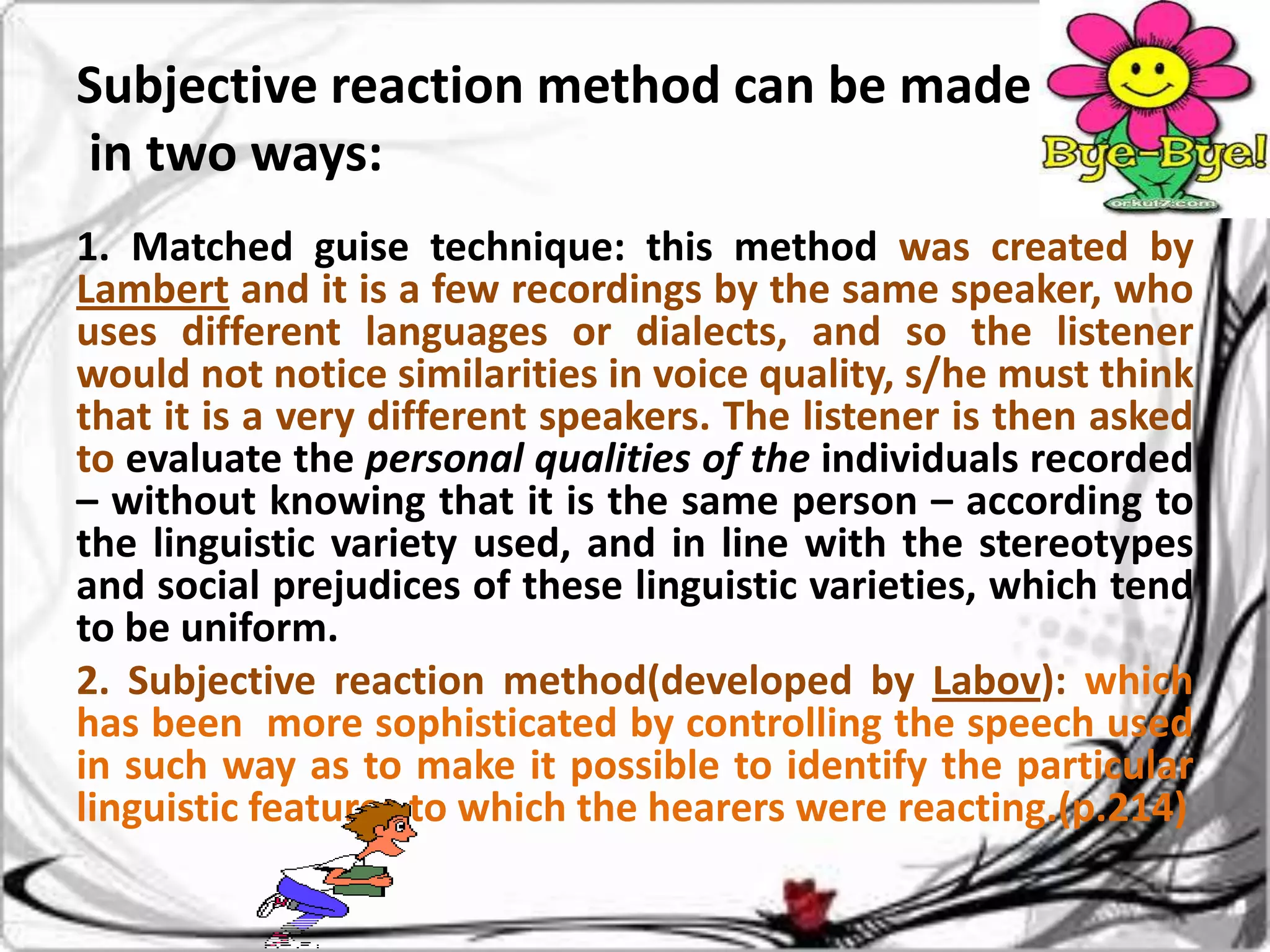Linguistic inequality can take three forms: subjective inequality regarding beliefs and prejudices about languages, strictly linguistic inequality concerning differences in linguistic knowledge and skills, and communicative inequality involving differences in ability to communicate effectively. Subjective inequality involves prejudices and stereotypes associated with particular ways of speaking. Linguistic features may be linked to stereotypes about characteristics like intelligence. Prestige of languages or dialects is also influenced by subjective views. Linguists study these issues to better understand social attitudes and their effects.

